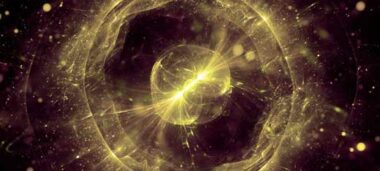 The origin of heavy elements such as gold has long remained one of the most captivating and unresolved questions in modern astrophysics. For decades, the prevailing view held that such elements are created exclusively during collisions between neutron stars—extraordinarily rare but immensely powerful cosmic events. However, a new study published in The Astrophysical Journal Letters in April 2025 challenges this assumption, proposing that giant flares from magnetars—an exotic type of neutron star—may have formed gold much earlier in the cosmic timeline than previously believed.
The origin of heavy elements such as gold has long remained one of the most captivating and unresolved questions in modern astrophysics. For decades, the prevailing view held that such elements are created exclusively during collisions between neutron stars—extraordinarily rare but immensely powerful cosmic events. However, a new study published in The Astrophysical Journal Letters in April 2025 challenges this assumption, proposing that giant flares from magnetars—an exotic type of neutron star—may have formed gold much earlier in the cosmic timeline than previously believed.
Led by Anirudh Patel, a doctoral candidate at Columbia University, the international team of researchers reanalyzed archival data from space telescopes operated by NASA and the European Space Agency, dating back more than twenty years. These long-overlooked datasets, now revisited using advanced analytical techniques, revealed telltale signals associated with massive gamma-ray flares emitted by magnetars.
Magnetars are neutron stars endowed with magnetic fields of unparalleled intensity—trillions of times stronger than Earth’s. They are formed from the collapsed cores of massive stars and represent one of the densest forms of matter in the universe. Under extreme internal stress, their crusts can rupture in what are known as “starquakes,” unleashing sudden bursts of gamma radiation into space. On rare occasions, these outbursts take the form of “giant flares,” which, according to the study’s authors, may be accompanied by the ejection of physical material rich in heavy elements.
Though the precise physical mechanism remains theoretical, the study relies on a well-established principle in nuclear astrophysics: the rapid neutron-capture process, or r-process. In the ultradense environment of a magnetar, nuclei can rapidly absorb free neutrons, altering their proton count through successive decays and transmuting into heavier elements. Under such conditions, it is plausible that elements such as gold, platinum, or even uranium could emerge—not in supernovae or kilonovae, but in the intense flare of a singular magnetic catastrophe.
Until now, gold was thought to originate solely from kilonova events—collisions of binary neutron stars. One such collision was directly observed in 2017, its electromagnetic signature suggesting the creation of heavy elements. But these collisions, while spectacular, are believed to have occurred relatively late in the universe’s history—billions of years after the Big Bang.
Here, the new hypothesis significantly shifts the timeline. Magnetars, according to astrophysical modeling, could have formed as early as 13.6 billion years ago—mere hundreds of millions of years after the birth of the first stars. If these celestial bodies were indeed capable of forging heavy elements in their earliest flares, then gold is not merely ancient; it is primordial.
No final confirmation exists as yet. However, NASA’s upcoming mission—the Compton Spectrometer and Imager (COSI), scheduled for launch in 2027—is expected to provide critical insights. Designed to study high-energy astrophysical phenomena such as magnetar flares, COSI will be equipped to detect the elemental fingerprints of material expelled during such explosions. Should it confirm the presence of gold or other heavy elements in these flares, a profound revision of cosmic history may be warranted.
If true, this new model invites not only scientific recalibration, but also philosophical reflection. Gold would cease to be viewed as a secondary product of cataclysmic mergers and become instead the testimony of stellar agony—matter expelled not from union, but from fracture. A relic not of collision, but of collapse. A trace of the universe’s ancient violence, now embedded in the artifacts of human culture.
Gold, then, is not merely valuable. It is a fragment of time, sealed in light, forged in a wound at the edge of a dying star.
